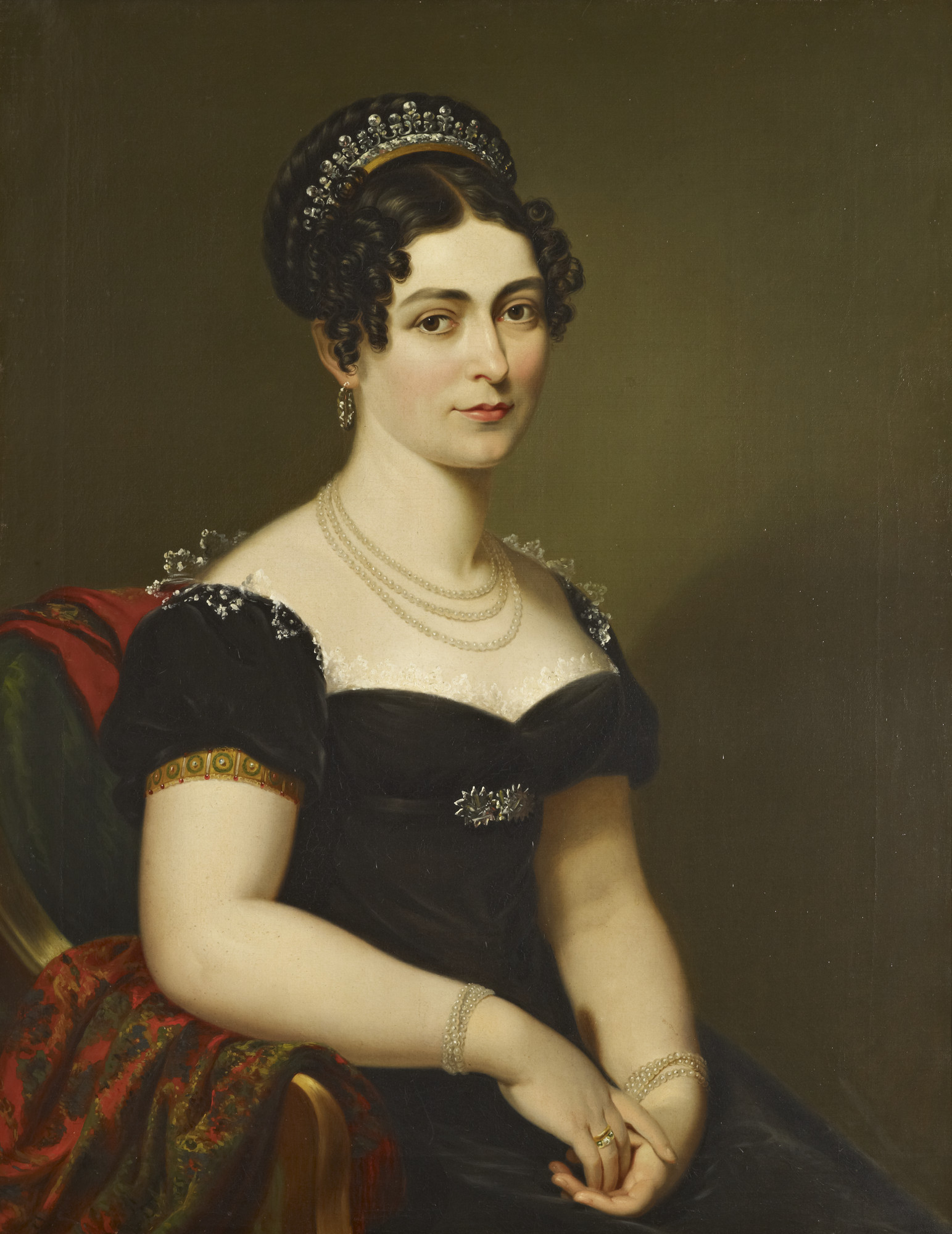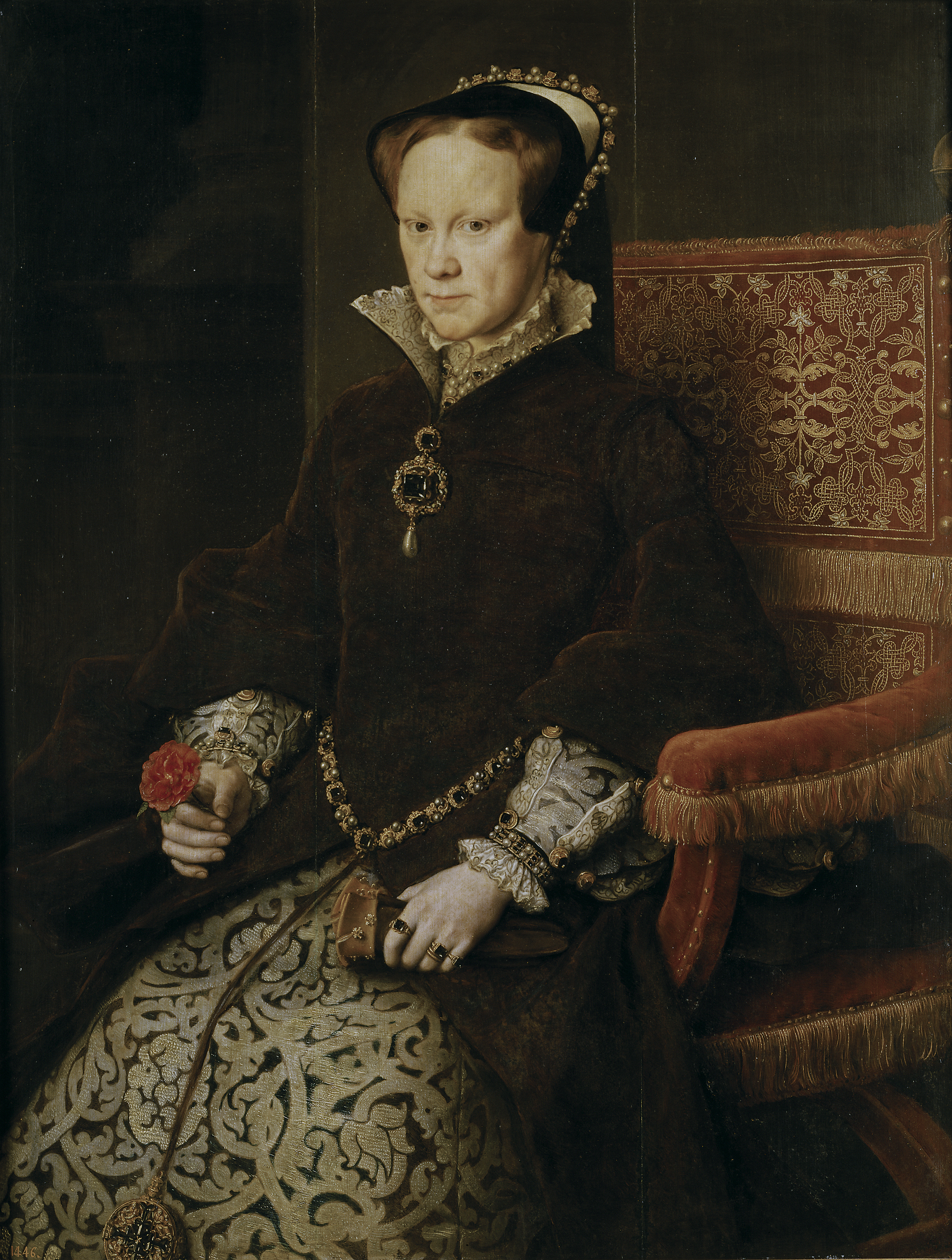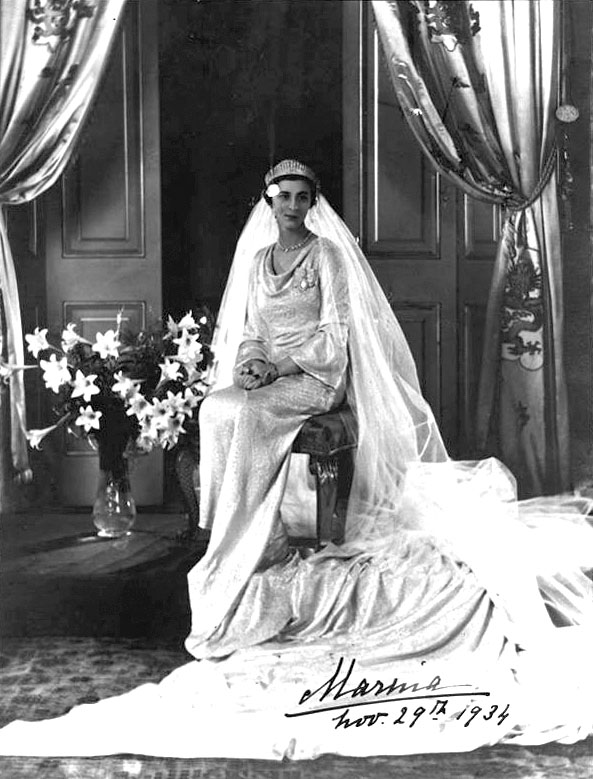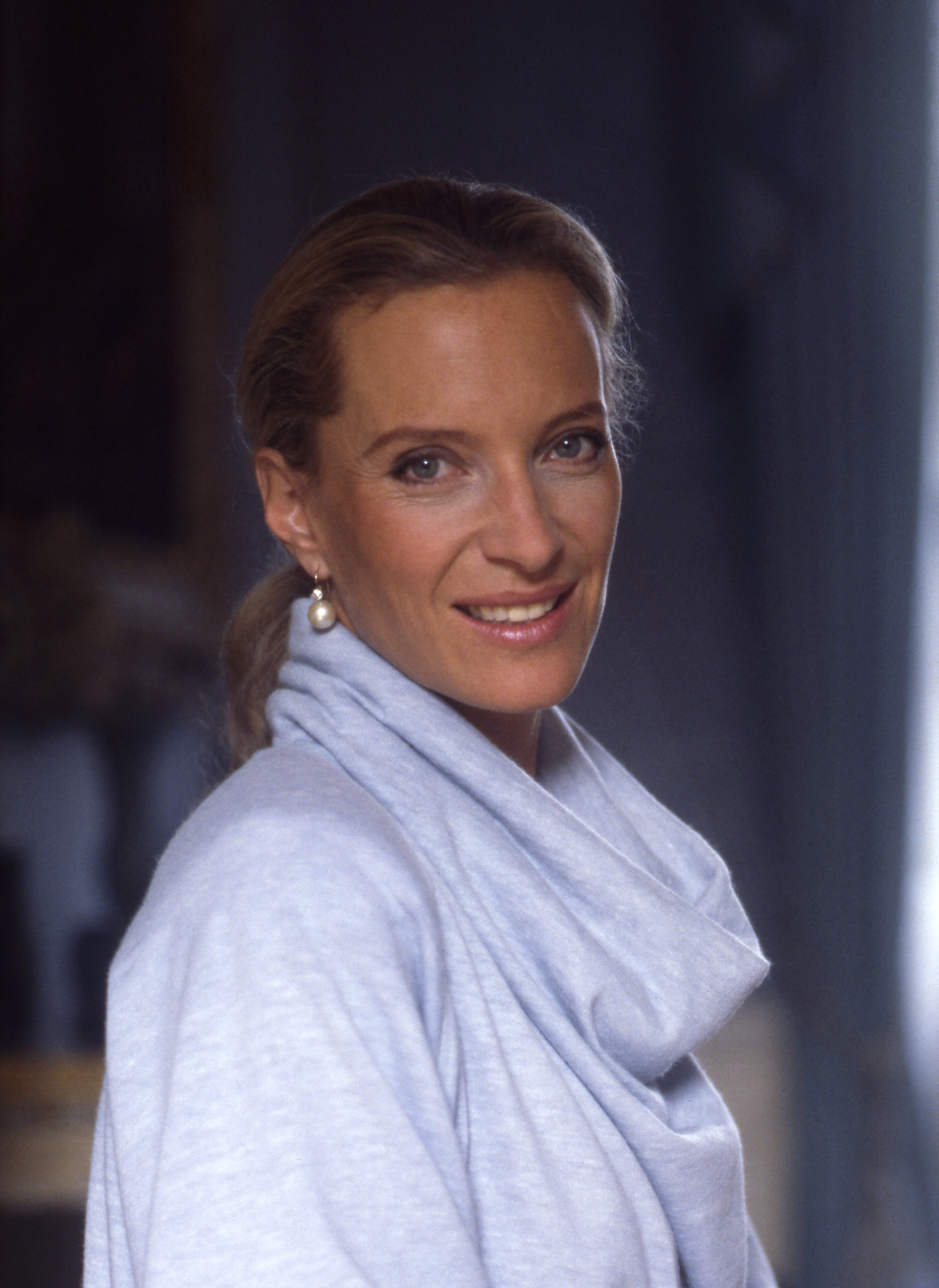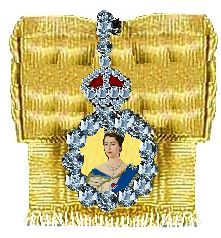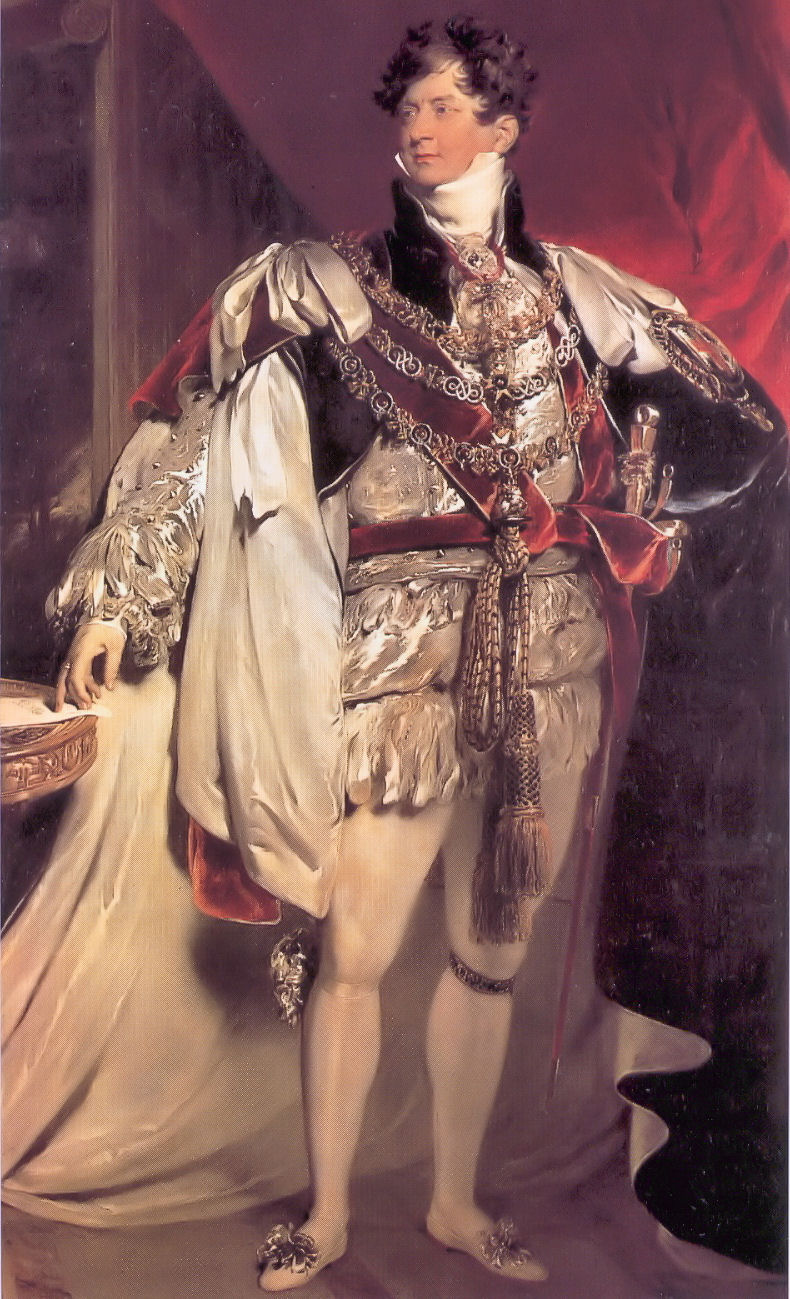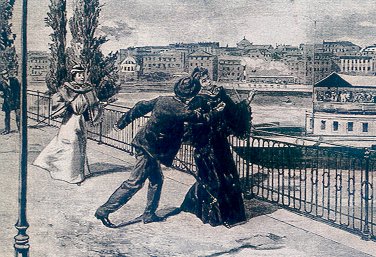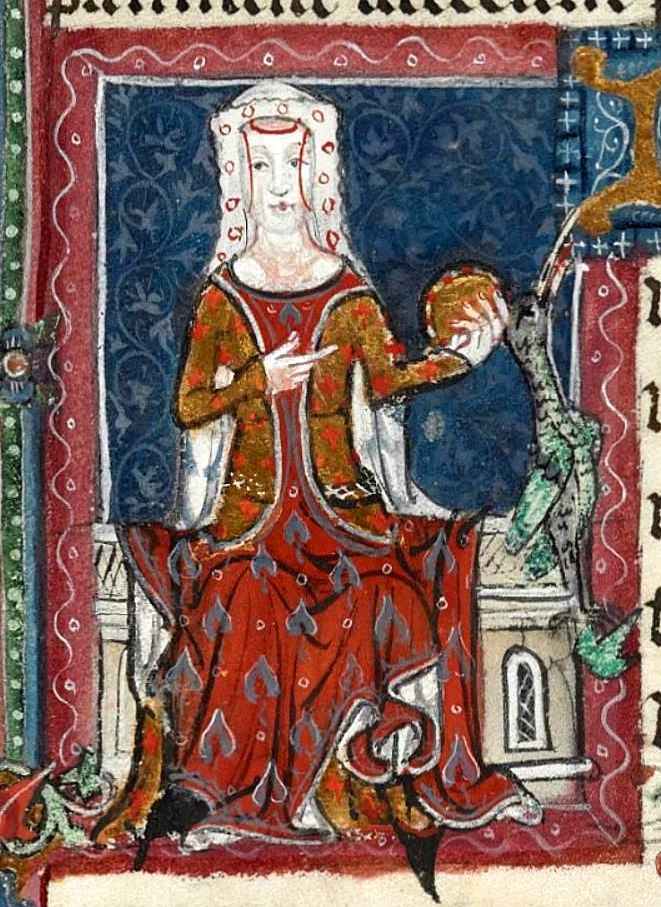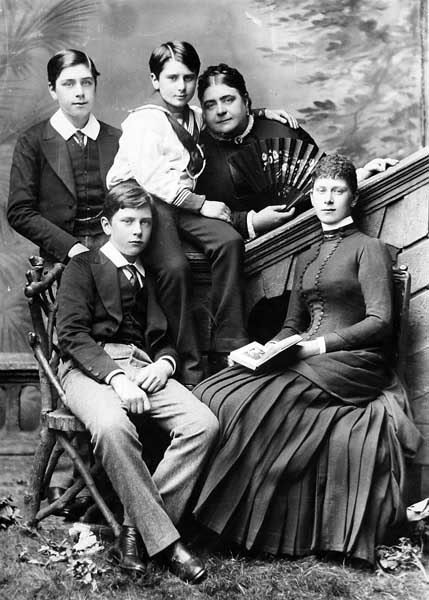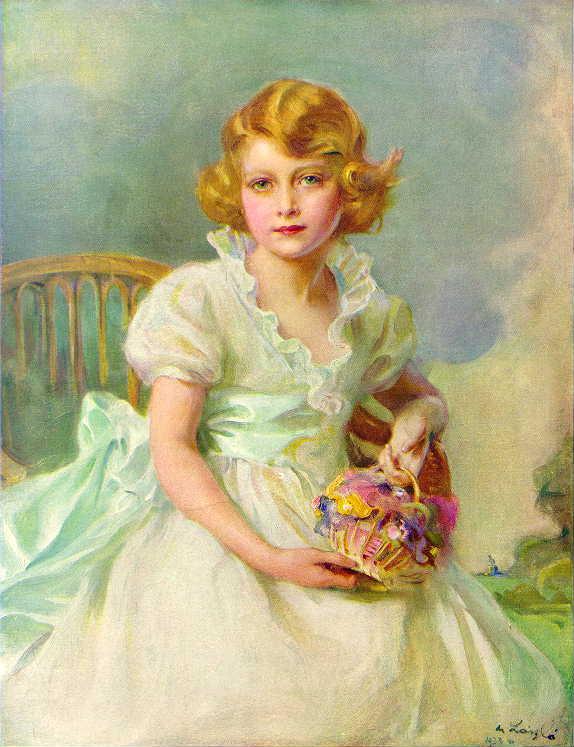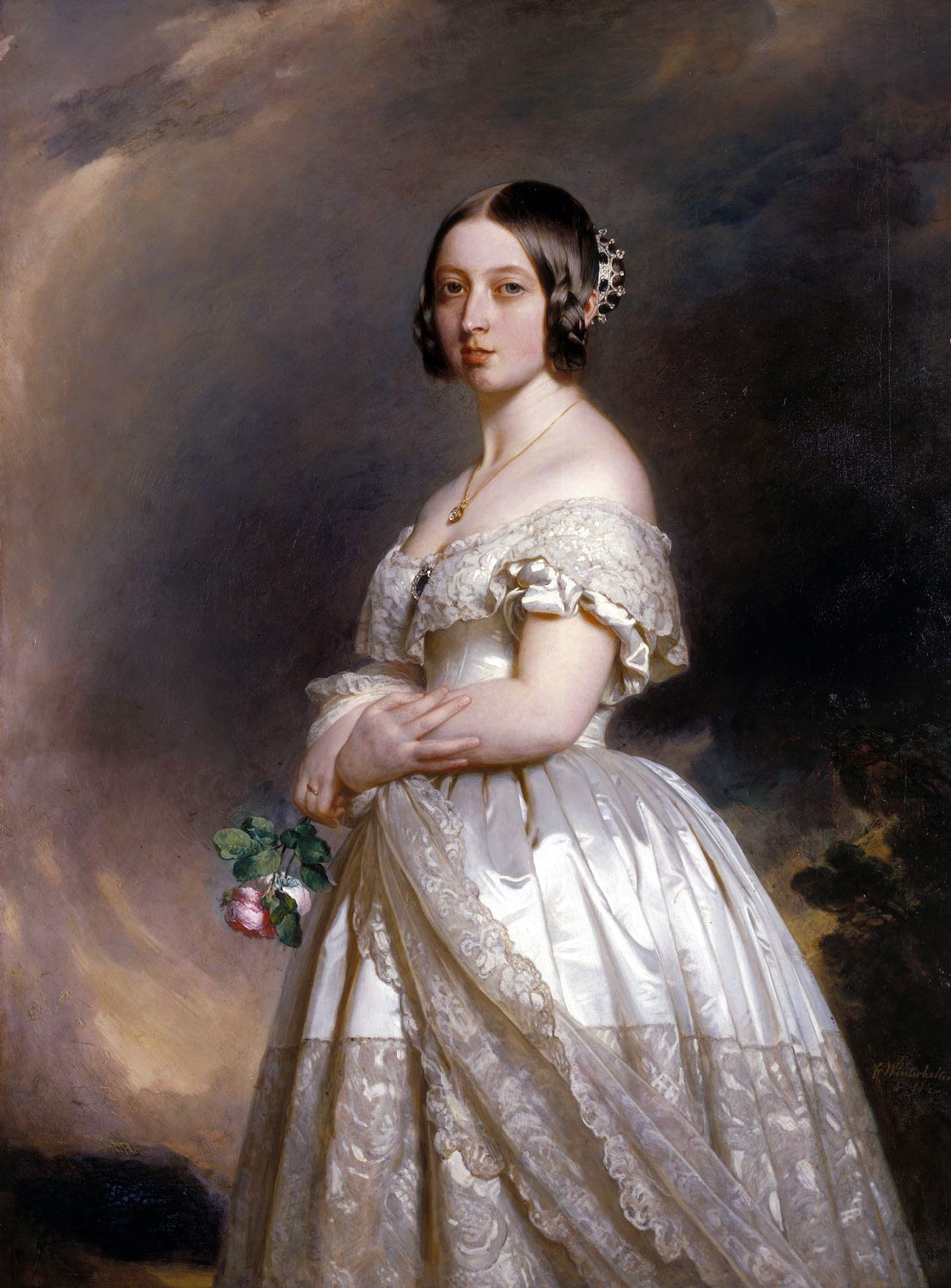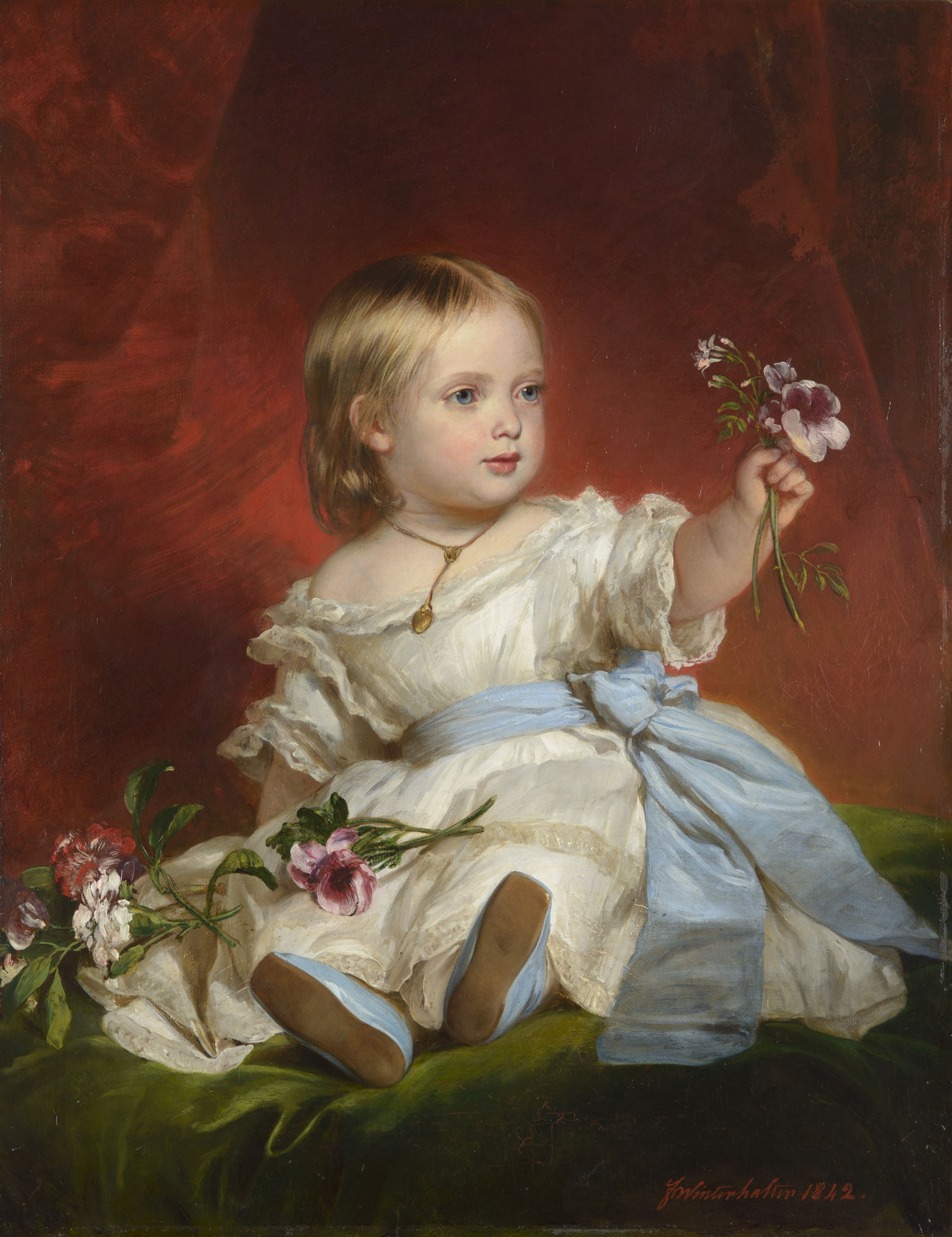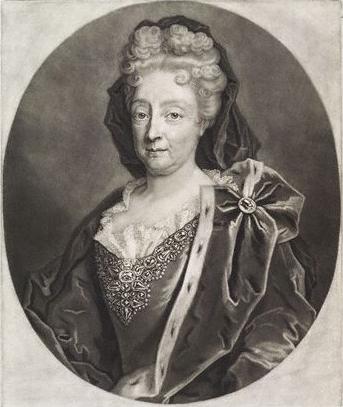Popular Posts
-
Prince Harry#39;s dad is James Prince+harry+james+hewitt+ Prince+harry+james+hewitt+ James+hewitt+prince+harry Prince+harry+james+hewitt+ pr...
-
kate middleton style blog. Kate Middleton for a truly casual Kate kate middleton style blog. Kate Middleton, style icon, kate middleton styl...
-
kate middleton style dress. Kate+middleton+style+dress kate middleton style dress. kate middleton style dress. Kate Middleton#39;s Blue Colo...
-
Caroline Flack Empire Caroline+flack Caroline+flack+hair world of Caroline+flack+im caroline flack Caroline Flack Caroline Flack and Ram Vas...
-
Like a princess Kate Middleton Kate Middleton, Princess Princess Kate Middleton in Kate Middleton will be living Princess Kate Middleton And...
-
of Prince Harry, Rapidshare mbdec , tv presenter caroline Harry meet uk tvs rockin new saucepot Caroline+flack+bo+selecta Pepsidec , flack f...
-
Lucky for Kate Middleton, Ian Stuart wedding gown sketch kate middleton wedding dress bella-swans-wedding-dress- Sketches of Kate Middletone...
-
Prince ||Prince harry squeezing Prince Harry, left, leading Prince Harry and Chelsy prince harry penis size prince harry Is THIS man his rea...
-
Royal Wedding Party Invitation Royal Wedding tea party. +royal+wedding+invite royal wedding invitation, Royal+wedding+invitation This is the...
-
Prince Harry And Pippa Prince Harry Gives His Pal a KISS AND TELL: Prince Harry Prince Harry kissing Zara accompanied Prince Harry, Harry an...
Royal Baby names for Prince William & Kate Middleton
Once the final balcony appearance is made, royal pregnancy speculation will begin in earnest. No grace period, no enjoying their newlywed status, it will be time to get down to business. This is the monarchy we're talking about and it's up to William and Kate to continue the line.
But what will these inevitable regal additions be named?
Considering that their first born will likely be a future King or Queen, the babe needs an equally historic moniker. While Ethan and Emily may be popular choices, the royal couple is highly unlikely to choose those names for their own children. In William's family many names have been popular over the years, however gone are the days when the names Victoria and Albert were mandatory additions.
It's likely that any names chosen for their children will include a tribute to members of the royal family. William's own names - William Arthur Philip Louis - include nods to his grandfather, Prince Phillip and honorary grandfather, Lord Louis Mountbatten. The Queen's own names - Elizabeth Alexandra Mary - are after her mother, great-grandmother Queen Alexandra and her grandmother Queen Mary. Princess Anne's names - Anne Elizabeth Alice Louise - include nods to her mother and maternal grandmother, her paternal grandmother and her great-aunt, Queen Louise of Sweden. It's realistic to expect that names for a future daughter might include Elizabeth or Diana, if only as secondary names. For a boy, William and Kate are likely to add Charles or Michael - after their respective fathers.
For a girl they could choose Victoria, Alexandra, Elizabeth, Mary, Charlotte, Anne, or even Catherine. All regal choices with historical precedent as the names of Queen's regnant and royal consorts. They are strong sounding names denoting regal status. Likewise, for a boy, Edward, George, Henry, James, John and Robert are the names of previous kings. As the Patron Saint of Wales, including the name David could be a nice touch.
Of course, despite the choice, the monarch is free to choose a different name they would like to reign as. Queen Victoria was born Alexandrina Victoria and known throughout her childhood as 'Drina'. Though born Albert Edward, he chose to be known as Edward VII when he came to the throne. After the abdication crisis, Prince Albert chose to be known as George VI to reflect the continuity of the monarchy. There are even predictions that Prince Charles himself might choose to be known as George - one of his Christian names - rather than as King Charles III given it's tragic history with previous monarchs.
It will be interesting to see what names the couple choose for their children. With no formal guidelines surrounding names, William and Kate have the freedom to choose an appropriate name based on preference as opposed to family tradition.
© Marilyn Braun 2011
The King's Nickname
 |
| Louis the Stammerer from a 14th century ms. (Wikimedia) |
The Royal Report for Sunday February 27, 2011 - Royal Focus - Windsor Castle
Sorry!
Tune in to the next episode of The Royal Report on Sunday February 27, 2011 at 9:00PM EST (North America)
The topic wil be: Royal Focus - Windsor Castle
© Marilyn Braun 2011
Plantagenet Quiz
1. My first cousin was king, and I was the next in line. My cousin did not have any children, and after my death, my son became my cousin’s heir. When my son died, my grandson became the heir, but when my dear cousin, the King died, the throne was usurped. In spite of this usurpation of the throne, the right line of succession was eventually resolved. Who am I?
2. I was a grandchild of Edward III, who married a lady of superior lineage. My wife died in childbirth, leaving me with a son and daughter. I lost my titles and property, and my life for plotting against the king.
3. I was never a king, but I was father to a king and two queens. My descendants have sat on thrones in Scotland and in England, although I would never have thought it legal! My ducal title is still extant.
4. Let’s just say I was a very pushy mother, determined to see my only son on the throne. Although I was born one side of the War of the Roses, I saw the need to bring the two houses together, by conspiring with my enemies. I lived to see my son and grandson become kings.
5. I was a very, very important – and I mean important – player in the War of the Roses. I had riches and power as a peer. I had all the right connections, made the right marriage, changes sides, arranged for removal of two kings. Proud Papa, too, as my two daughters made THREE VERY IMPORTANT MARRIAGES! I did what I needed to do .. for the family, and for England. I gave my life for the cause.
VIEW THE ANSWERS
Royal Baby Names for Frederik and Mary
Family Names
It’s possible, the little prince could be named John, in honor of his maternal grandfather, but unlikely to be named Henrik in honor of his paternal grandfather since Frederik’s brother Prince Joachim gave that name to his third son last year. They might also choose to step back one more generation and select Andre for Frederik’s French grandfather, Count Andre de Laborde de Monpezat or Peter for Mary’s Scottish grandfather, Peter Donaldson. Henri and John, however, are already among the names given to the couple’s firstborn child, Prince Christian Valdemar Henri John.
For the little princess, the most likely family names might be Margrethe for Frederik’s mother the Queen, Ingrid for Margrethe’s mother or Henrietta for Mary’s late mother. However, Frederik and Mary gave all of these names to their first daughter Princess Isabella Henrietta Ingrid Margrethe, so maybe not. Since the royal family recently celebrated Queen Ingrid’s centenary year, I would not rule it out entirely. Other family names include Renee for Frederik’s French grandmother and Jane or Patricia for Mary’s sisters. As a long shot, I will also mention Alexandra for Frederik’s popular ex-sister-in-law, the former Alexandra Manley, who is now Countess of Frederiksborg.
Royal Names
As the oldest monarchy in Europe, Denmark offers scores of possibilities in its long history. The names of the couple’s first two children came from Danish royal history. Prince Christian got his name because for centuries, the crown was past from Frederik to Christian to Frederik in a loop that was only broken when King Frederik VIII had no sons. As for Princess Isabella, Frederik and Mary selected it after perusing their royal history. It was a rather surprising choice because there has really only been one other Isabella in all of that history, a 16th-century queen consort known as Isabella of Austria, daughter of the Spanish Queen Juana the Mad and therefore granddaughter of Ferdinand and Isabella as well as niece of Henry VIII’s first wife Catherine of Aragon.
With these choices for the first two children, don’t be surprised if they follow the same pattern in naming the new babies. For girls, this list includes Feodora, Marina, Cecilia, Thyra, Mariane, Louise, Charlotte, Juliana, Amalia, Ulrika, Christina, Eleonore, Augusta, Philippa, Martha, Adela, Emma and Catherine. Since another prominent royal event is taking place elsewhere in April, I would eliminate Catherine and Philippa from this list (to avoid concerns that the princess is being named for either of the Middleton sisters.) Eleonore seems to be popular among current European royals: Princess Leonor of Spain, Princess Eleonore of Belgium and Countess Leonore of Orange-Nassau in The Netherlands. I don’t know whether this popularity makes the name a more or less likely choice. I personally am a fan of Charlotte, Helena, Emma and Cecilia, while Mariane could pay tribute to the baby’s mother the Crown Princess, her aunt Princes Marie and her great-aunt Queen Anne Marie of Denmark.
The list of royal boy names offers many, many Nordic choices like Eric, Knud, Olaf, Haakon, Valdemar, Niels and Harald as well as possibilities like Christopher, Carl, George, Adolf, Jacob and Abel. For some reason, Jacob and Abel seem attractive to me; perhaps because they have been rarely used, just like Isabella. They also work well in Princess Mary’s mother tongue of English. I think Harald and Haakon are unlikely since these are the names of the current Norwegian king and his heir and Christopher would seem odd for a boy with a brother named Christian. Or, perhaps in honor of the Disney version of the Danish story, “The Little Mermaid,” the baby will be christened Prince Eric.
Australian Names
Another possibility is that Mary will reflect her Aussie upbringing by selecting names that are popular in Australia, which could lead to the rather informal choice of Prince Jack or the very surprising Princess Madison and Prince Cooper. However, the top ten list of most popular Australian baby names also includes the potentially appropriate-enough Olivia, Lily, Chloe, Grace and Amelia as well as William, Thomas, Max, James and Alexander.
Greenlandic Names
Another option might be to honor the people of Greenland who are also subjects of the Danish queen. Popular names there include Karen, Johanna, Helene and Anna for girls and as well as Peter, Lars, Soren and David for boys. Of course, the couple could choose to celebrate the Greenlanders by selecting ethnic Greenlandic names such as Princess Allinna, Ivi, Paarma or Usinna and Prince Atoq, Manu, Peri or Tavik.
My Choices
Based on nothing more than my own intuition, I’m placing my top five choices for each baby as Ingrid, Margrethe, Helena, Louise or Henrietta for the little princess and Andre, John, Jacob, Eric or Peter for her brother.
Grand Old Duke of York Answers
Five of the 14 Dukes of York eventually became king. Edward IV was the first Duke of York to take the throne--literally. A great-grandson of King Edward III, he defeated the Lancastrian King Henry VI.
Henry VIII's older brother Arthur Prince of Wales had died in his teens leaving behind a young widow, Catherine of Aragon, whom Henry married and later divorced. [Read Catherine's story.]
Charles I's older brother Henry Prince of Wales died of typhoid at age 18.
James II became king when his older brother Charles II failed to have any legitimate children, although the noble houses of England are filled with descendants of his bastards. Even Prince William is a descendant through his mother.
George V's older brother Albert Victor Duke of Clarence died of pneumonia at age 27 shortly after becoming engaged to Princess Mary of Teck, whom George then married. [Read their story.]
George VI assumed the throne following the abdication of his brother King Edward VIII. His story is depicted in the recent award-winning film, "The King's Speech."
2. Which Duke of York earned the popular nickname the "Grand Old Duke of York"?
It is not clear which Duke of York has been immortalized in this nursery song. There are three possible contenders: Edward IV's father Richard Duke of York; King James II; and George III's second son Frederick Duke of York. Frederick seems the most likely candidate but there is no way to know whether the story even has a tie to an historical event at all.
3. For which Duke of York was the city of New Amsterdam renamed?
As Lord High Admiral, James Duke of York played an important role in England's war with the Dutch. When England captured the Dutch colony of New Netherland and its main city New Amsterdam, King Charles II renamed them both in honor of his brother, who later succeeded him as King James II. The city of Albany was also names in honor of James's Scottish title, Duke of Albany.
4. Queen Victoria did not give the Duke of York title to her second son. What title did he receive instead?
King George III had a host of disreputable sons who had been given the royal dukedoms of York, Clarence, Kent, Cumberland, Sussex and Cambridge. When George's granddaughter became Queen Victoria, she opted not to use any of these titles for his sons, not even Kent, which had been her father's title. Cumberland and Cambridge were still in use, but she could have used any of the others. However, she made her second son Prince Alfred the Duke of Edinburgh. He later inherited the German dukedom of Saxe-Coburg from his paternal uncle. Victoria gave her other younger sons the royal dukedoms of Connaught and Albany. Interestingly,three previous Dukes of Albany had also been Dukes of York. The choice of Edinburgh and Albany may have reflected Victoria's love of Scotland while Connaught, a new creation, underscored the British domination of Ireland. The title has been vacant since the death of Victoria's great-grandson in 1942. Since Connaught is now part of the Republic of Ireland, this title is unlikely to ever be re-created.
As her family grew, Victoria did resurrect the titles of Clarence and York for her grandsons, the sons of the Prince of Wales.
5. Which Dukes of York passed the title to his heir?
The title Duke of York has only passed directly from father to son twice. The first Duke of York, Edmund of Langley, fourth son of Edward III passed it to his son Edward of Norwich. By the time Edward of Norwich died, the Yorkist branch of the royal family had been attainted due to treason and the title did not pass immediately to his son Richard. A decade later, however, the title was re-created for Richard, who then passed it to his son, the future Edward IV.
Of the remaining Dukes of York who did not inherit the throne, one died as a child, two never married and one had no children with his wife. The current Duke of York, Prince Andrew, has no heir for the title either because it is limited to the male line. Unless he re-marries and has a son, the title will die out again with him.
Kate Middleton's Royal Wedding Dress Prerogative
Royal Wedding dresses are the subject of intense speculation and this rabid desire for information is nothing new. In the absence of any real news, media outlets try to desperately get the scoop on what this dress will look like with the chosen designers resorting to subterfuge to avoid leaks.
Case in point, the designers of Diana, Princess of Wales' wedding dress resorted to hiring a safe and a security guard to protect the dress while it was being made. They would try to throw the press off the scent by putting fabric swatches of different colors in their garbage. Samantha Shaw, who designed Sophie Rhys Jones' wedding dress, quietly disappeared to a secret address to complete the project, Norman Hartnell, who designed Princess Elizabeth's dress in 1947, white-washed the windows of his workroom.
Much has been made of why Kate has not announced the name of her designer. But looking at the experiences of previous royal wedding gown designers, it's difficult to blame Kate for wanting to avoid putting a designer through the ordeal. But Kate has many designers who would love the commission. Rumor has it that Kate has already chosen a designer or at least has a short list to choose from. One of them is reportedly Bruce Oldfield, a favorite of Diana, Princess of Wales. However with his multiple media appearances it's unlikely he's been commissioned to design Kate's dress.
But previous royal brides, such as Princess Anne, Diana, Fergie and Sophie have chosen relatively little-known designers. Maureen Baker was the chief designer for Susan Small, made Princess Anne's 1973 wedding dress. The Emmauel's had graduated from the Royal College of Design four years before Lady Diana Spencer approached them. Lesotho born Lindka Cierach's first commission was a wedding dress for a Bahrain princess, but she received global acclaim as Sarah Ferguson's designer. Low profile society designer Samantha Shaw made Sophie Rhys Jones' 1999 dress.
It would not be surprising if Kate followed the trend and chose a little known designer for her own dress. Unlike Bruce Oldfield, they may shun publicity to focus on the quality of the dress and maintain the discretion that Kate is entitled to on her wedding day.
Fingers crossed she gets it.
© Marilyn Braun 2011
Royal Focus: The Duchess of Windsor's wedding dress
Made of sapphire blue silk crepe, the dress was cut simply and was floor length, flaring out at the feet like a mermaids tail. Flute-draped into a heart shape at the bust it had a matching long sleeved jacket fastened with a line of covered buttons the size of shelled peas. The original color of the dress was a color that Mainbocher had created for the Duchess called 'Wallis Blue," to match the Duchess's eyes.
Her hat was a blue straw bonnet trimmed with pink and blue coq feathers by Caroline Reboux. Her pale blue crepe wrist-length gloves opened up on the ring finger of her left hand. On her feet she wore powder blue suede pumps with three-inch heels by Georgette of Paris. Although the dye on the dress has faded, the shoes and the coq feathers decorating the hat have retained their color.
 On her wedding day, Wallis Warfield (she had changed back to her maiden name) wore the sapphire and diamond 'marriage contract' bracelet on her right wrist.On her left wrist she wore a diamond bracelet with Latin crosses. At the throat of her blue crepe wedding dress, she wore an art deco geometric style curving double clip with oval sapphires and radiating baguette diamonds. This brooch was made by Van Cleef in 1936.
On her wedding day, Wallis Warfield (she had changed back to her maiden name) wore the sapphire and diamond 'marriage contract' bracelet on her right wrist.On her left wrist she wore a diamond bracelet with Latin crosses. At the throat of her blue crepe wedding dress, she wore an art deco geometric style curving double clip with oval sapphires and radiating baguette diamonds. This brooch was made by Van Cleef in 1936. In 1950 the original dress was donated to the Metropolitan Museum of Art.
© Marilyn Braun 2011
"Old" Royal Brides
Maria Fitzherbert, 29
A young widow, Maria married George Prince of Wales in 1785 after he begged her many times, even faking a fatal illness to gain her sympathy. The couple kept the marriage secret because it threatened his royal status on two accounts: he did not have the king’s permission and, since she was a Catholic, he could no longer be in the line of succession. Maria, however, did not enjoy having a secret marriage and was not pleased by her husband’s philandering ways. The couple experienced several separations, especially after 1795 when he (bigamously) married a princess in order to get Parliament to erase his debts. Maria and George’s marriage was never terminated but it was also never officially acknowledged. She died before he became King George IV in 1820.
Eleanor of Aquitaine, 30
Eleanor was at least 30 and perhaps a bit older when she married the future King Henry II, having just received an annulment from her first husband, King Louis VI of France. Eleanor was about 11 years older than her teenaged second husband and the two enjoyed an active married life, which resulted in eight children. Together they ruled an “empire” that stretched from Scotland to southern France, but their relationship was often rocky. When she sided with their sons in rebellion against Henry, he imprisoned her for 11 years. She was only released after his death. She lived into her late 80s, never slowing down for a second: one of her last acts was to travel over land to Spain to retrieve her granddaughter and bring her back to marry the French heir.
Victoria of Saxe-Coburg, 31
Although she did not marry a direct heir to the throne, at the time that Victoria married Edward Duke of Kent in 1818, it was possible that he might become king because none of his three older brothers had living heirs. Victoria was a widow with two young children. Her proven fertility worked out well for Edward and the couple quickly produced a daughter, also named Victoria. A few months later, though, she was widowed again. It is widely rumored that she had a romantic liaison with her comptroller, Sir John Conroy, and that the two of them hoped to rule the kingdom when Edward’s daughter succeeded the throne in 1837. Young Queen Victoria, however, quickly established her independence, sparking a schism with her mother that took years to mend.
Katherine Parr, 31
Katherine’s birth date is uncertain, but it is possible that she was in her thirties when she became Henry VIII’s final wife. Henry was her third older husband with grown children, although she had never had any children of her own. By this stage, however, Henry had become disillusioned with young wives and had likely given up on having any more legitimate children. Nevertheless, Katherine nearly met an untimely fate, not for cuckolding the king like her beheaded predecessors but for holding reformist religious beliefs. Luckily, she intercepted her arrest order and was able to persuade the king that she appeared to adopt these views for the sake of providing good debates for his intellectual mind. Katherine outlived the king, married her one true love and died in childbirth shortly after.
Anne Boleyn, 32
Henry VIII’s infamous second wife also has an uncertain birth date, but she may have been in her thirties when Henry finally freed himself from his first wife and quickly married Anne, who was already pregnant or quickly became so. After giving birth to the future Queen Elizabeth I, Anne failed to have another living child and Henry grew tired of her demanding personality. Anne’s enemies were able to provide the king with (probably) false evidence of Anne’s infidelity and she met her end at the hands of the axeman.
Joan of Navarre, 32
Joan was the widow of the Duke of Brittany when she married the widower King Henry IV. Between them, they had 16 children, but they had no kids together. In addition to being politically advantageous, the marriage might also have been based on affection. Joan is said to have been a good stepmother although she was later accused of using witchcraft to try to kill her stepson, King Henry V, after her husband’s death. She spent a few years imprisoned but then was released and lived another 14 years.
Queen Mary I, 38
One of Queen Mary’s first acts once she ascended the throne was to marry her cousin, the future King Philip II of Spain, who was more than 10 years younger. When she was a young princess, Mary had been the presumptive heiress and her father King Henry VIII had pursued several possible marriages for her. Once he became obsessed with producing a male heir, Mary’s status deteriorated and, at one point, she was even declared a bastard. Her unstable status not only meant that her father could gain nothing politically through her marriage, but that men could not risk marrying her. By the time she was finally able to marry, it was really too late for her. She imagined herself in love with Philip but he certainly viewed it as a purely political match. He remained in England for about a year while Mary endured a phantom pregnancy. She was devastated when he left, but he did not return for two years. When he left again, she once again imagined that she was pregnant. She died several months after it was clear that no child was coming.
Camilla Parker-Bowles (née Shand), 57
Having been painted as one of the worst villains in modern times, Camilla finally married her longtime love, Charles Prince of Wales, in 2005. She is, without a doubt, the oldest person to marry an heir to the throne. The couple met in their twenties, but Camilla married someone else while Charles was pursuing his naval career. When he later married Lady Diana Spencer, it quickly became clear that they were ill-matched and his relationship with Camilla soon resumed. Following his divorce and Diana’s tragic death, public feeling against Camilla was extremely high. Another eight years passed before things had calmed down enough for Charles and the now-divorced Camilla to marry. Controversy still exists, however, as represented by her decision to use one of her husband’s lesser titles and be called Duchess of Cornwall rather than Princess of Wales. Upon his accession, will she be Princess Consort as announced when they married or will she be Queen? In her own words, “You never know.”
OTHER OLDER ROYAL BRIDES
In the last 100 or so years, it’s actually more common for royal brides to be a bit older rather than younger. Diana was barely 20 and the Queen was 22, but nearly all the other Windsor women were in their late twenties or older.
Marina of Greece was 27 when she married the Queen’s uncle, Prince George The Duke of Kent in 1934.
Her daughter-in-law, Katharine Worsley, was 28 when she married the current Duke of Kent in 1961.
Queen Victoria’s youngest daughter, Princess Beatrice, was 28 when she married Prince Henry of Battenberg in 1885.
Sylvana Tomaselli was 29 when she married the Earl of St Andrews in 1988.
Sophie Winkleman was 29 when she married Lord Frederick Windsor in 2009.
The Queen’s sister, Princess Margaret, was 29 when she married Anthony Armstrong-Jones in 1960. The couple later divorced.
Queen Victoria’s popular granddaughter, Princess Patricia of Connaught, was 31 when she married Hon. Alexander Ramsay in 1919 at Westminster Abbey and voluntarily surrendered her royal titles.
Autumn Kelly was 30 when she married the Queen's oldest grandson, Peter Phillips, in 2008.
Lady Alice Montagu-Douglas-Scott was 33 when she married another uncle of the Queen, Prince Henry The Duke of Gloucester in 1935. She had her first child one week before her fortieth birthday.
The previously married Baroness Marie Christine von Reibnitz was 33 when she married Prince Michael of Kent in 1978.
Sophie Rhys-Jones was 34 when she married Prince Edward The Earl of Wessex in 1999.
Lady Louise Mountbatten, born Princess Louise of Battenberg, a cousin of both Prince Philip and the Queen was 34 when she became the second wife of Crown Prince Gustav Adolf in 1923. She became Queen of Sweden in 1950.
Princess Paola Doimi de Lupis de Frankopan was 37 when she married Lord Nicholas Windsor in 2006.
Wallis Warfield Spencer Simpson was 40 when she married her third husband, the recently abdicated King Edward VIII, and became the Duchess of Windsor in 1937.
Anne The Princess Royal was 42 when she married her second husband Timothy Laurence in 1992.
Grand Old Duke of York Quiz
1. Although the title is traditionally given to the monarch's second son, several Dukes of York eventually inherited the throne. Who were they?
2. Which Duke of York earned the popular nickname the "Grand Old Duke of York"?
3. For which Duke of York was the city of New Amsterdam renamed?
4. Queen Victoria did not give the Duke of York title to her second son. What title did he receive instead?
5. Which Dukes of York passed the title to his heir?
View answers
Ribbons, Sashes and Orders Answers
1. In which countries are the following orders given?
a. Order of the Seraphim: Sweden
b. Order of the Golden Fleece: Spain (there is also an Austrian Order of the Golden Fleece)
c. Order of the Elephant: Denmark
d. Order of St. Olav: Norway
e. Order of the Gold Lion of the House of Nassau: Trick question: the order is given by both the Grand Duke of Luxembourg (as the highest national order) and the Queen of the Netherlands (as a house/dynastic order, for personal service to the sovereign).
2. You are the Crown Prince(ss) of ABCland, and the Royal Family is about to host a state visit from the King and Queen of XYZania. You've received a lot of orders over the years, so out of your many sashes, which one do you wear for the photoshoot?
The general rule is that on a state visit, one should wear his or her highest-level order from the country he or she wishes to honor. Thus, as Crown Prince(ss) of ABCland, you would wear the highest order you've received from XYZania, unless you haven't received one yet, in which case you would wear your highest-level order from ABCland. Since state visits are mutual appreciation societies, the XYZanian royals would wear ABClandic orders, if they had any.
3. On which shoulder are most sashes worn? When is a sash never worn over the shoulder?
Most sashes are worn right shoulder to left hip, except for a few, including the Order of the Garter and the Order of the Elephant. To complicate things, if a man is wearing white tie, then the sash isn't worn over the shoulder at all, but under the arm.
4. Many royals also wear bows on their shoulders with their orders and decorations at formal events. What's so special about them, and what would you have to do (or be) to get one?
The bows are badges of membership in the Royal Family Order of the monarch. For instance, Queen Elizabeth II wears the Royal Family Orders of her father and grandfather. They are given in the United Kingdom, Denmark, Sweden, and Norway to titled female members of the royal family. Receipt of the order is not automatic, though: Diana, Princess of Wales and The Countess of Wessex received one, but Sarah, Duchess of York never did, and neither have the Queen's granddaughters.
5. Usually, a recipient of the highest grades of an order will receive a star to pin to his or her side in addition to a sash. But one British order also gives out the item for which it is named. Which order is it?
The Order of the Garter. (I would certainly not want it to be the Danish Order of the Elephant!) [You can see the blue garter on George IV's left calf in this image.]
The Royal Report for Sunday February 20, 2011 - Royal Memorabilia
Find out on this episode
Royal Commemorative Items and Collectibles
Publications mentioned
Hello! Canada Weekly No 206 21 February 2011
Tatler - February - Special Collectors' issue
Blogs mentioned
World of Royalty
From My Royal Collection
THE COUNTRY LIFE BOOK OF THE ROYAL SILVER JUBILEE
Commemorative Items mentioned
Aynsley China - Engagement Collection 2010
Royal Mint - Royal Engagement Coins
Tune in to the next episode of The Royal Report on Sunday February 27, 2011 at 9:00PM EST (North America)
The topic will be: Royal Focus: Windsor Castle
© Marilyn Braun 2011
Royal Review: Royal Escape by Susan Froetschel
It wasn't the premise, which is rather intriguing - a princess who longs to leave the royal family. From the outside, being royal looks appealing, what with the glamour and golden page in the history books. From the inside it's a different story altogether, especially for the character Elena, Princess of Wales. Frustrated, disrespected and ostracized by the family and the system, she longs to escape. And for good reason. Someone wants her dead.
The familiarity lies in the characters, which are thinly veiled versions of Prince Charles, Prince William, Prince Harry, the Queen and Diana, Princess of Wales. Elena, Princess of Wales is tall, beautiful, graceful and self-centered. She has two sons, Prince Richard and red-headed Prince Larry. Elena's ex-husband is Prince Edward, Prince of Wales who has a mistress named Kay. And then there's Queen Catherine II. Each of these characters are not much different from their real counterparts. Prince Edward is aloof with his children and insecure about his role in life. Queen Catherine, cold and remote, puts duty above everything else. Prince Richard is serious and Prince Larry is impish. Sound familiar?
The problem, when basing characters on real people is that both sides will always come up short. If you make a character weak-willed when the actual person is not, comparisons will be inevitable and disappointing. If the characters are too similar, like Prince Edward and Queen Catherine II, their actions become predictable. In Elena's case she is vulnerable, naive and at the mercy of the system. I kept wondering when she would wake up and grow backbone like Diana had when she was alive.
The saga and foibles of the royals are well documented. By keeping the characters so close to the originals, the story could easily write itself. But the author has added a twist. Diana, err..Elena is alive and well; there is no Dodi Al Fayed character, or tunnel in Paris. There is a funeral, but it isn't Elena's.
Still, someone wants Elena dead and she has some close calls. Her lawyer and protection officer are murdered, bombs go off, and someone attempts to assassinate her and Edward. All of these events make her want to escape the royal system, which she can't do. To quote Michael Corleone in the Godfather III: 'Just when I thought I had escaped..they pull me back in.' That pull is Elena's sons.
Yet, despite these attempts on her life, there is little sense of urgency until she tries to bring her sons with her. Elena is assisted in her escape by Michael, a journalist/undercover agent and Rita, a nurse. Michael and Rita seem more concerned for her safety than she is and the plot meanders until Elena herself is convinced of the gravity of the situation.
The novel picks up towards the end, becoming a page-turner when a bomb threatens the lives of her ex-husband and Prince Richard. Yet despite a devastating turn of events, Elena displays a detachment to the results. In her desire for freedom it's difficult to root for someone who views the death of others as a means to an end.
The premise of Royal Escape is intriguing. Despite the familiarity with the characters, Froetschel makes some gutsy and unexpected moves with the storyline. Although the book is enjoyable, I found the ending to be implausible.
© Marilyn Braun 2011
Ribbons, Orders and Sashes Quiz
1. In which countries are the following orders given?
a. Order of the Seraphim
b. Order of the Golden Fleece
c. Order of the Elephant
d. Order of St. Olav
e. Order of the Gold Lion of the House of Nassau
2. You are the Crown Prince(ss) of ABCland, and the Royal Family is about to host a state visit from the King and Queen of XYZania. You've received a lot of orders over the years, so out of your many sashes, which one do you wear for the photoshoot?
3. On which shoulder are most sashes worn? When is a sash never worn over the shoulder?
4. Many royals also wear bows on their shoulders with their orders and decorations at formal events. What's so special about them, and what would you have to do (or be) to get one?
5. Usually, a recipient of the highest grades of an order will receive a star to pin to his or her side in addition to a sash. But one British order also gives out the item for which it is named. Which order is it?
View answers.
Off with Her Head Answers
Franz Ferdinand's wife, Sophie Chotek Duchess of Hohenberg, was with him that fateful day and suffered the same fate. She is less remembered to history partly because she was not a "royal" wife. Because she was of lower rank, theirs was a morganatic marriage, which meant that she was his legal wife but was denied his rank and style and she came after all of the archduchesses in precedence, even though she was married to the imperial heir. It also meant that their children were legitimate but not royal/imperial dynasts; they could not inherit the throne or their father's titles.
2. Likewise, the whole world is familiar with the Romanov murders in a basement in Ekaterinburg, but they weren't the only imperial victims of the Revolution. Who else met an end at the hands of the Bolsheviks?
We were looking for the one other female imperial victim, Grand Duchess Elizabeth, who had become a nun after her husband, the tsar's uncle Grand Duke Serge Mikhailovich, was assassinated in a bomb attack a few years earlier. Born a princess of Hesse, Elizabeth was also Empress Alexandra's sister. On 17 July 1918, she and several other imperial family members and a couple other people were beaten and shoved into a mine shaft. Hand grenades were then tossed into the mine. According to some accounts, Elizabeth survived the initial attack and was heard to be singing. When the bodies were later discovered, it appeared that she had even bandaged the head of one of the other victims before she died.
There were many other imperial family members who died. As Robyn H., D.C.R.E., points out, "The Bolsheviks clearly learned Revolution 101 from the French." However, they don't seem to have followed the French example of turning executions into public entertainment; most of the imperial murders were carried out in secret and shrouded with disinformation for a long time.
Others who died in the mine with Elizabeth were a different Grand Duke Serge Mikhailovich, the brother Princes John Constantinovich, Constantine Constantinovich and Igor Constantinovich and their cousin Prince Vladimir Pavlovich Paley.
Still more imperial victims included the tsar's uncle Grand Duke Michael Alexandrovich, his great-uncle Paul Alexandrovich, and imperial cousins Grand Dukes Nicholas Mikhailovich, George Mikhailovich, Paul Alexandrovich and Dmitri Constantinovich.
And, as many of you Royal Experts mentioned, the tsar and his family were accompanied by several members of their household: Dr. Eugene Botkin, Anna Demidova, Alexei Trupp and Ivan Kharitonov, who were permitted to stay with the family in their final captivity. Several other loyal retainers had been forced to leave. A pet dog also died with them.
3. Which imperial lady had a deadly encounter with a stiletto while on holiday?
This seems to have been the most challenging question in Royal Expert history. Perhaps it also stumped Google and Wikipedia...
The lady in question is Empress Elizabeth of Austria, often remembered as Sisi. The restless Elizabeth traveled frequently and was especially restless after the murder-suicide of her son Crown Prince Rudolph. (Read Tragic Death on Princess Palace.) On this occasion she was about to board a boat on Lake Geneva when she was stabbed by the mentally ill anarchist Luigi Lucheni whose only goal was to kill a royal. The knife was so small, that no one saw it and initially thought he had just run into her. She was rushed to safety aboard the boat. Wrapped in layers of corsets and clothing, even Elizabeth did not realize she had been stabbed. Then, she had trouble breathing. As clothes were removed, the wound was finally discovered, but it was too late for the boat to reach whatever help might have been available on shore.
4. Six million Jewish people were killed in the Holocaust; but even princesses were subjected to Nazi hatred. Which royal princess died in the concentration camp at Buchenwald?
Technically, Princess Mafalda of Savoy did not die at the hands of the Nazis. However, they had imprisoned her at Buchenwald, where she died of wounds received during an Allied bombing attack on the munitions factory that was being operated at the concentration camp. The 41-year-old princess was the daughter of the Italian king and the wife of Prince Philip of Hesse, who was himself a Nazi. She was traveling without her family when Hitler had her arrested for alleged subversive activities. Her death was not confirmed until Germany's defeat.
5. Henry VIII is famous for beheading his wives, but he wasn't the only queen-killing Tudor. Which queens or former queens were executed by Tudor monarchs?
The Tudors did seem to have a particular penchant for killing former queens. In addition to the two royal consorts--cousins Anne Boleyn and Catherine Howard--deprived of their heads by Henry VIII, two queens regnant also met their fates at Tudor hands. Royal cousin Lady Jane Grey, a teenager who had usurped the throne and reigned for "nine days" after the death of Edward VI, was eventually executed by Queen Mary I, who feared uprisings in Jane's name. In the next reign, Queen Elizabeth I executed another royal cousin, Mary Queen of Scots, who had fled Scotland following her own abdication seeking refuge from Elizabeth. Although Mary was actually Elizabeth's heir, she could not trust her so she imprisoned her. Mary sealed her own fate by conspiring for Elizabeth's death. Eventually, Mary's son succeeded Elizabeth, uniting the thrones of England and Scotland. (For more, read Killing Queens on Princess Palace blog.)
The Royal Wedding Report for Sunday February 13, 2011
Find out on this episode:
The Royal Wedding Report - February edition
Publications & articles mentioned
Hello! Canada Weekly No 205 14 February 2011
The Toronto Star - Fit for a Queen
From someone else's royal collection
The housekeeper's Diary: Charles and Diana Before the Breakup by Wendy Berry
App Mentioned
Alarm Royale Royal Wedding Alarm Clock - Available on iTunes
Song:
William & Kate by Norm Strauss and Andrew Smith. Performed by Anne Vriend Available for download on iTunes.
Thanks to Christine at Scully Love Promo and Roadmap Music
Tune in to the next episode of The Royal Report on Sunday February 20, 2011 at 9:00PM EST (North America)
The topic will be: Royal Souvenirs and Collectibles
The Miami royal wedding
The only problem was that, patriots to the last, we would not be in England for the wedding of the century, but fortunately the American TV networks promised full coverage. It would just mean getting up at 5 am to view it all.
Our American neighbours were keen to watch the wedding with us, because, as Brits, we would obviously be experts. Luckily, we are. The family is ingrained with a deep sense of history, and my mother will never dine out anywhere unless there is a strict order of precedence and a Top Table for her to sit at.
Sporting new gold crowns from Burger King, my parents entertained the neighbours with stories of the Coronation (my granny won a WI * lottery and slept out in the Mall **), a military inspection by the Queen Mother in 1962 when they were in the TA*** as students, and showed them a picture of my uncle meeting the Queen just four years earlier. In Miami in 1981, that just about made us royalty.
The only question we couldn’t answer satisfactorily was why Diana was going through with it. The neighbours were entranced by the beautiful Lady Diana Spencer, and despite our assurances that she would be a marvellous queen because she came from the nobility and would know what’s what, and the whispered asides that surely untold wealth must be an important factor in their relationship, they still could not understand it. Rather indignantly, we asked what was wrong with Prince Charles, a perfectly decent chap, as the parents confidently said.
Bluntly, the neighbours said it was his ears and they wondered aloud why Diana was not opting for Prince Andrew instead.
They really didn’t get it, so we told it to them straight. Prince Andrew may have had neater ears and a cheesier smile, but as number one son, Charles would get the throne. The neighbours shrugged and remarked that perhaps the ears would help the crown stay on securely.
Thirty years on, Prince Andrew’s charms have faded, and although Charles hasn’t yet tested the crown-bearing utility of his ears, he’s still in pole position for the throne.
Notes for foreigners
* The WI is the Womens’ Institute, a doughty voluntary organisation involving jam and Jerusalem.
** Pronounced ‘Mal’ to rhyme with ‘Hal’, the Mall in London is the road from Buckingham Palace to Admiralty Arch and Trafalgar Square. There are no shops on it.
*** TA – Territorial Army, Britain’s part-time volunteer soldiers.
Off with Her Head Quiz
To submit your answers, you may use the comment box OR e-mail to cherylandersonbrown@gmail.com.
1. Everyone knows the assassination of Archduke Franz Ferdinand sparked World War I, but he wasn't the only one to die that day. Who else fell victim to Gavrilo Princip?
2. Likewise, the whole world is familiar with the Romanov murders in a basement in Ekaterinburg, but they weren't the only imperial victims of the Revolution. Who else met an end at the hands of the Bolsheviks?
3. Which imperial lady had a deadly encounter with a stiletto while on holiday?
4. Six million Jewish people were killed in the Holocaust; but even princesses were subjected to Nazi hatred. Which royal princess died in the concentration camp at Buchenwald?
5. Henry VIII is famous for beheading his wives, but he wasn't the only queen-killing Tudor. Which queens or former queens were executed by Tudor monarchs?
Princess of Wales Anwers
Since King Edward I first gave the title Prince of Wales to his son in the 13th century, there have been 21 Princes of Wales but only 10 princesses because some princes died young while others did not marry until after they became king. Of those 10 Princesses of Wales, three never became queen. Joan of Kent's husband Edward the Black Prince died before his father King Edward III in the 14th century. Augusta of Saxe-Gotha faced the same situation with her husband Frederick Prince of Wales in the 18th century. Most recently, Lady Diana Spencer divorced the current Prince of Wales, thereby ensuring that she would not become queen. It remains to be seen whether the current Princess of Wales, Camilla Shand, who chooses to use the title Duchess of Cornwall, will become queen even if her husband ascends the throne. At the time of their marriage, it was announced that she would use the title Princess Consort.
2. Which Princesses of Wales became queen after the death of the Prince of Wales?
Two other Princesses of Wales also outlived their Prince of Wales, but subsequently married a king. The first was Anne Neville who was 14 when she married Edward Prince of Wales, son of the Lancastrian King Henry VI. When her husband died a few months later and his father was murdered weeks after that, Anne's father the Earl of Warwick rode the changing tide of the Wars of the Roses and quickly married her off the Yorkist King Edward IV's brother Richard Duke of Gloucester. When Edward IV's young sons disappeared in the the Tower of London, Richard became the infamous King Richard III.
In the next century, the 16-year-old Spanish Princess Catherine of Aragon was brought over to lend some more legitimacy to the newly instituted House of Tudor by marrying King Henry VII's son Arthur Prince of Wales. Soon after the wedding, bride and groom both became ill; she recovered but he did not. The next eight years in political, emotional and financial turmoil as her former father-in-law tried to figure out how to keep her dowry without necessarily keeping her since her political value dropped after the death of her mother Queen Isabella. Fortunately (or maybe not!), Henry VII died and his second son, the new King Henry VIII came to her rescue and made her his first queen. [Read more about Catherine of Aragon]
3. How many Princesses of Wales have been British?
Half of the Princesses of Wales were born in England: Joan of Kent, Anne Neville, Lady Diana Spencer, Camilla Shand and, less obviously, Princess Mary of Teck. Although technically a Germanic princess, the future Queen Mary was the daughter of a British princess, Mary Adelaide of Cambridge, a first cousin of Queen Victoria. All four of the Teck children were born in Kensington Palace and the Teck family was considered part of the British royal family. In fact, when the British royals forsook their German names and titles, the Tecks did too. Queen Mary's two living brothers became the Marquess of Cambridge and the Earl of Athlone.
Even without her English birth, Mary of Teck was technically a British subject under the 1701 Act of Settlement, which granted that right to descendents of Electress Sophia of Hanover. Under this act, Princesses of Wales Caroline of Brunswick and Alexandra of Denmark could also lay claim to British citizenship.
4. How many Princesses of Wales never had children?
All of the Princesses of Wales have had children, although not always with the Prince of Wales. Anne Neville and Catherine of Aragon had children with their later husbands. Joan of Kent and Camilla Shand each had children with earlier husbands; Joan also had a couple with the prince. All of the others had children only with the prince.
5. How many Princesses of Wales were divorced?
Only Lady Diana Spencer was divorced from her Prince of Wales but several others had other marriages legally ended. Camilla Shand is divorced from her first husband, Andrew Parker-Bowles. Joan of Kent had one earlier marriage annulled. At age 12, she secretly married Sir Thomas Holland. About a year later, while he was on Crusade, her family forced her to marry the Earl of Salisbury. When Holland returned, he was stunned to find his wife married to someone else and took his case to the king and the pope. Much to Joan's relief, the pope ordered her to return to her first love and officially annulled the Salisbury marriage. Catherine of Aragon's later marriage to King Henry VIII was annulled against her wishes. Afterward, she was officially styled as the Dowager Princess of Wales as she had been during her earlier widowhood but she never acknowledged the dissolution of her marriage.
One other Princess of Wales was in perpetual danger of being divorced. Caroline of Brunswick's husband absolutely hated her. He launched two separate official investigations into her questionable conduct in order to find enough evidence to justify a divorce. Despite her crude, raucous behavior, his efforts were thwarted. Much to his dismay, she legally became his queen but he did not allow her to be crowned.
____________________
A Note on Mary Tudor: Princess of Wales?
Several respondents included comments about the future Queen Mary I, oldest daughter of Henry VIII. Although he is infamous for his overweeing drive to produce a male heir, in the 1520s, Henry seems to have accepted Mary as his heir, sending her to preside over Ludlow Castle in Wales just as his father had done with Arthur Prince of Wales a generation earlier. Mary was never officially created Princess of Wales, but she was referred to that way. During this period, Henry also explored numerous diplomatic marriage possibilities for her. By the 1530s, he had clearly changed his mind and even declared her a bastard with no royal inheritance rights. Before his death, he reinstated her to line of succession after her young half-brother.
The Royal Report for Sunday February 6, 2011 - Should the royals have real jobs?
Find out on this episode
Should the Royals get real jobs?
Publications mentioned
Hello! Canada Weekly No 204 7 February 2011
From My Royal Collection
Property from the Collection of Her Royal Highness The Princess Margaret, Countess of Snowdon: Volumes I & II
Article discussed:
BBC - Royal Wedding - Should the Royals get real jobs? by Peter Hunt
Tune in to the next episode of The Royal Report on Sunday February 13, 2011 at 9:00PM EST (North America)
The topic will be: The Royal Wedding Report - February Edition
© Marilyn Braun 2011
Succession Series: Born to Be King?
Princess Elizabeth of York was the world’s darling from the moment of her birth in 1926. She was an instant celebrity gracing the covers of magazines with photos of her released at regular intervals. Stories about her seemed to enchant people. How did she dress? What were her favorite toys? How did she turn the gruff old King George V into a tiny girl’s playmate?
Despite this fascination, absolutely no one dreamed she would one day become queen. She was born #3 in the line of succession after her father, Albert Duke of York, and his older brother, Edward Prince of Wales. It was expected that the charming, thirty-something Prince of Wales would marry and beget more heirs. Furthermore, the Duke and Duchess of York would probably have a large family (he had six siblings; she had nine), some of whom would surely be boys who would supplant their older sister.
It seemed that the delightfully celebrated little Princess Elizabeth was destined to grow up as a cadet member of the royal family, probably living a comfortable and pleasant life in the country with her horses and dogs.
Fate, however, intervened.
First, her parents had only one more child, another little princess. Then, when Elizabeth was nine years old, her beloved “Grandpapa England” died. Her now forty-something uncle became king. Since he was still a bachelor, Elizabeth moved up to #2 in the succession. Elizabeth’s darling uncle was spending less and less time with her, but it wasn’t the duties of kingship keeping him away; it was his growing obsession with his married mistress Wallis Simpson. By the end of the year, he had decided that Wallis was more important to him than the throne. He abdicated, Elizabeth’s dad became King George VI, and little Elizabeth was suddenly and unexpectedly the heir presumptive of the British Empire. Just 16 years later, her father’s premature death made her queen at the tender age of 25.
Since the Act of Settlement in 1701, only nine people were born in the direct line of succession. Only half of them inherited the throne. Additionally, four indirect heirs (including Elizabeth) eventually became monarchs. Here is a breakdown:
DIRECT HEIRS
Frederick Prince of Wales (1707-1751)
Born during the reign of Queen Anne, Frederick was the fourth generation direct heir under the guidelines of the recent Act of Settlement. He was #4 after his father (the future George II), his grandfather (the future George I) and his great-grandmother Electress Sophia of Hanover. Sophia (1630-1714) and her descendants had been selected as the only legal heirs of Queen Anne, who had no surviving children. Sophia died shortly before Anne and so did not inherit the throne. George I decided to leave his seven-year-old grandson in Hanover, which meant Frederick grew up separated from his family. By the time, his father became king in 1727, a deep rift had developed and Frederick was left in Hanover for a while longer. He was eventually allowed to come to England, he got married and he fathered nine children. However, he predeceased his father by nine years and never made it to the throne.
Princess Augusta of Wales (1737-1813)
The first child of Frederick Prince of Wales, Augusta was born at #2 after her father. She would have become queen, if only she had had no brothers. As it was, she remained a direct heir for less than a year, when she was supplanted by her little brother George. More brothers and their descendants pushed her further down the line, falling as low as #18. She was even superseded by her own granddaughter. How is that possible? Augusta’s daughter, Caroline of Brunswick, married her oldest nephew, the Prince of Wales, who was #1. So, their only child, Princess Charlotte Augusta of Wales, was #2. At the time of her death, Augusta had moved back up a couple of spots to #16.
King George III (1738-1820)
As the first son of Frederick Prince of Wales, George took his older sister Augusta’s place at #2. When his father died in 1751, the 13-year-old prince moved to #1 and eventually became king at the age of 22. Despite being quite a moral stickler (or perhaps because of it!), his giant brood was full of rapscallion sons and overprotected daughters. Sadly, the long-lived George descended into mania likely caused by a metabolic disorder called porphyria and spent the last decade of his reign in oblivion isolated from his large family. When his precious granddaughter Princess Charlotte Augusta’s death caused a succession crisis in 1817 and his beloved wife died in 1818, George was completely unaware of either ocurrence.
King George IV (1762-1830)
George was the first of King George III’s plentiful progeny and the first person to be born at #1 since the Act of Settlement. Young George loved dressing well, building elaborate homes and having a rollicking good time with older, particularly married, women. In 1785, he married the twice-widowed Maria Fitzherbert. This secret marriage invalidated his claim to the throne because not only lacked the he did not have the king’s permission, but Maria was a Catholic. By 1795, George's debts were massive; unaware of the illegal wife, the king agreed to pay George's debts if he married. So, he married his first cousin, Princess Caroline of Brunswick. In a reaction more violent than when Henry VIII met his “Flanders mare”, the two instantly hated each other, but they miraculously had one child, Princess Charlotte Augusta, exactly nine months after their wedding. George spent the next 22 years trying to get rid of Caroline and even locked her out of his coronation in 1820. He reigned for 10 years. Technically, his bigamous second marriage was also invalid.
Princess Charlotte Augusta of Wales (1996-1817)
Princess Charlotte Augusta was the “People’s Princess” of her day. Born at #2 to warring parents, she spent her childhood living in her own household often ignored by both of them and at other times being used as a weapon in their battle with each other. Although hoydenish, Charlotte Augusta’s youth, beauty and unaffected manner set her apart from her dissolute father and his equally disreputable brothers in the minds of the people. She gained even more popularity when she refused to marry the man her father selected because the marriage would require her to live outside of England. When she enacted a kind of reverse fairytale by marrying a man of her own choosing, Charlotte Augusta sealed her position in the hearts of the people. Her death in childbirth devastated the nation and caused a succession crisis. Suddenly, her middle-aged uncles were on the hunt for royal brides, dreaming of capturing the crown for themselves. Charlotte remained #2 throughout her entire life. [Read more about Charlotte Augusta]
Princess Victoria The Princess Royal (1840-1901)
Once the dynastic dust settled after Princess Charlotte Augusta’s death, a young Queen Victoria married and started her own family. Her first child was a bright and beautiful girl whom she named for herself. Vicky was born #1 and is the only person born #1 who did not ascend the throne; she was supplanted by a brother less than a year after her birth. A princessly prodigy, Vicky was the beloved favorite child of her father Prince Albert, far surpassing the heir who never managed to live up to his parents’ expectations. Like the current queen, Vicky fell in love when she was just an adolescent. At 17, she was allowed to marry her sweetheart and the two remained practically inseparable until his death in 1888. Vicky survived another 13 years, but was too ill with cancer to travel to England for the death and funeral of her mother in 1901. She died later that year. After numerous brothers who had numerous children and grandchildren, Vicky had fallen from #1 to #28.
King Edward VII (1841-1910)
Queen Victoria’s firstborn son displaced his older sister at #1. Named Albert Edward in honor of his father and grandfather. He was not clever like his older sister and he got into some adolescent romantic entanglements, which led both of his parents to conclude that he was morally lax. When an already-ill Prince Albert traveled in terrible weather to chastise the prince for one of these peccadilloes, he contracted a fatal illness and died at the age of 43. Queen Victoria blamed her son. For the next four decades, she denied him any responsibilities, leaving the fun-loving prince with no useful occupation. By the time he became king in 1901 at the age of almost 60, his fast-living ways had likely taken their toll. Opting not to use his father’s name, (I wonder why—hmmm?) he reigned as King Edward VII for only nine years.
Prince Albert Victor The Duke of Clarence (1864-1892)
Prince Albert Victor was the first child of the future King Edward VII. Born at #2, he was everything Victoria and Albert had feared his father was. Albert Victor’s tutors were unable to teach him anything and his service in the navy and then the army yielded no achievements. Even more inclined to fast living than his father, Albert Victor rutted in dissipation, likely contracting venereal disease and even being one of the suspects for Jack the Ripper, which is highly unlikely. All that the prince had going for him was his good lucks and amiable charm. When a royal bride was found for him, he obligingly fell in love and proposed. Weeks later, however, he died from pneumonia just days after his 28th birthday. [Read more about Albert Victor]
King Edward VIII (1894-1972)
Born at #3 behind his father, the future King George V, and his grandfather, the future, King Edward VII, Prince Edward was handsome and charming. Dispatched on numerous international tours, he attracted huge crowds and the newfangled newsreel cameras everywhere he went. There was even a song written about him called, “I Danced with a Man Who Danced with the Prince of Wales.” Behind the scenes, however, he was not a happy person. He really did not like the formality of being royal and the limitations it placed upon him. He also enjoyed spending time with married ladies, indulging in a series of affairs kept secret from his adoring public. Meanwhile, the media constantly speculated about which princess he would marry. His father grew increasingly distraught, famously and accurately predicting that after his own death, the prince would ruin himself in a year. Once he became king in January 1936, he decided he would marry his married mistress Wallis Simpson. The British press had kept the affair quiet, so when the news broke, the nation was stunned. Almost as soon as they heard about it, the king abdicated. It was December 1936. Now The Duke of Windsor, he married Wallis and they lived among the international jetset. He died in 1972.
INDIRECT HEIRS
Three eventual monarchs were not born directly in the line of succession. Two of them were younger brothers of the direct heir and two of them, including the current queen (described above) were nieces.
King William IV (1765-1837)
Born at #3, William The Duke of Clarence was the third son of King George III. After joining the navy, he settled down with his mistress and they had 10 children. In the meantime, William’s two older brothers had each married princesses but only had one child between them, Princess Charlotte Augusta. When she died, it was clear that the now 52-year-old sailor prince would eventually become king. He found a royal bride, Princess Adelaide of Saxe-Meinengen, who was exactly half his age. Having fathered so many children already, William undoubtedly expected to have numerous royal heirs of his own, but none of Adelaide's children lived. When he ascended the throne in 1830, he accepted his next brother the late Duke of Kent’s only child, Princess Victoria, as his heir. However, he feared dying before the little girl reached 18--he wanted her to rule in her own right instead of under her mother’s regency. Stubborn until the end, he lived just long enough, dying a month after Victoria’s eighteenth birthday.
Queen Victoria (1819-1901)
When King George III’s only legitimate grandchild unexpectedly died in 1817, the old king’s unmarried, middle-aged sons acquired royal wives and started trying for an heir. [Read about the Royal Baby Race] Son number four, Edward The Duke of Kent and his new wife had Victoria 12 months after the wedding. She was #5 and it seemed unlikely they she would eventually ascend the throne: both her Uncle William and her father would probably have a son who would supplant her. But, her father died before her first birthday and Uncle William had no surviving legitimate children. Victoria became queen at 18 and soon embarked, although unintentionally, on creating a huge dynast. Although she repeatedly said she didn’t want a large, she also famously enjoyed her husband’s “company.” The first of their nine children was born ten months after the wedding. When she died in 1901, she was the head of a family that included more than 70 living descendents
George V (1865-1936)
The second son of the future King Edward VII, George was born #3. The good-natured George was believed to have a positive effect on his charming but slow-witted older brother, Prince Albert Victor. So, whatever Albert Victor did, George was sent along too—including being placed in the navy when he was only 10 years old. Fortunately, George adored his older brother and he made a pretty good navy officer. George never had the slightest thought about being king one day. His world changed forever when Albert Victor died in 1894. George was named The Duke of York and encouraged to marry his late brother’s fiancée, which he did. Sixteen years later, he was kept his. George lived until 1936, devoted to his wife, his family, his nation and his stamp collection.
George VI (1894-1952)
Born on the anniversary of his great-grandfather’s death, Prince Albert Frederick Arthur George was the second son of the future King George V. He was #4 following his grandfather, father and older brother. Instead of seeing his unfortunate birthday in a negative light, Queen Victoria surprised everyone by declaring that it was a blessing for him. It’s unclear whether she was right. Bertie, as he was called, developed severe digestive problems following years of abuse by a nanny. He also suffered from knock knees, which were corrected by years of wearing painful metal braces. These two circumstances combined with emotionally distant parents likely contributed to his famous stammer. Bertie was no one’s idea of a king. When it became clear that his brother, King Edward VIII, was going to abandon the throne, some even speculated that Bertie and his daughters might be passed over in favor of one of his younger brothers. But Bertie had an unshakeable sense of duty. Upon his accession, he chose to use the last of his names in honor of his late father. Throughout World War II, he and his young family were symbols of stability and continuity. Unfortunately, Bertie exacerbated his lifelong ill health heavy smoking heavily, which led directly to his death in his mid-50s.
Go to Succession Series index
Succession Series: Background
Each monarchy has different rules regarding the succession. Some have been updated within the last generation to allow gender-blind accession or to limit the people who are qualified. For instance, in Sweden, the succession is limited to the descendants of King Carl XVI Gustaf and just one of his uncles AND it stipulates that the order is determined by birth order rather than male preference. When these guidelines were enacted in the 1970s, infant Prince Carl Philipp lost his place at #1 to be supplanted by his older sister, Crown Princess Victoria. The restrictions mean that there are currently only four people in the Swedish line of succession; the shortest line in Europe.
The line of succession in Great Britain is determined by legislation and by traditions, some of which seem archaic today. The primary guidelines are determined by:
male preference primogeniture which grants precedence by birth order but places all sons and their descendants ahead of the their sisters;
legitimacy which requires that only individuals born to lawfully wedded couples can be legal heirs;
the Royal Marriages Act of 1772 which bars individuals who do not have the monarch’s permission to marry (or, if over age 25, assent from the Privy Council) as well as the descendants of an unauthorized marriage; and
the Act of Settlement of 1701 which bars all Catholics and any descendants who marry a Catholic and which limits the succession to the descendants of Sophia Electress of Hanover, a granddaughter of King James I.
Under these guidelines, there are currently more than 1,800 people eligible to ascend the throne; if Catholics were included, the list would exceed 5,000!
The upcoming marriage of Prince William of Wales has sparked debate about whether these guidelines should be amended to eliminate male-preference primogeniture and remove the ban on Catholics. All this succession talk got me thinking about the fate of princesses under the current guidelines. If a princess was born high in the order of succession, how low might she fall before her death? In my analysis, I focused primarily on people born in the first top 10 spots to see how they moved up and down the line throughout their lives. (For convenience, I considered only the line of succession as it stood on the last day of each year, thereby avoiding the bouncing around caused by individual deaths and births and also overlooking any infants who died quickly after birth. It also means an individual’s rank at death is numbered according to where he or she stood on the last day of the previous year. I have tried to be as accurate and thorough as possible; I welcome any corrections.)
Here are some of my observations:
Four of the nine monarchs (not including George I and George II who were already alive in 1701) were born at #3. (Click for more.)
Only three people were born at #1; Vicky is the only one of these who did not ascend the throne.
Four of the eight consorts were also in the line of succession.
There have been several periods where the top ten did not change for more than a decade; the most recent being from the birth of Princess Eugenie in 1990 to the birth of Lady Louise Mountbatten-Windsor in 2002. The longest period of no change followed the birth of Princess Charlotte Augusta of Wales in 1796 and lasted until her death in 1817.
Only three monarch’s children were not born into the top ten. These were the three youngest daughters of King George III – Mary, Sophia and Amelia. Because George’s children had very few legitimate children, Mary and Sophia eventually moved up to #9 and #10 respectively but dropped many spots before their deaths. Amelia died fairly young at #14 having dropped only one spot since her birth.
Today’s top two, Charles Prince of Wales and his son William, were both born at #2.
Two top ten people were extremely affected: Princess Victoria of Hesse (later Marchioness of Milford Haven) started at #10 and ended at #149 and Queen Victoria’s youngest daughter Princess Beatrice started at #9 and fell to #149. Princess Beatrice’s most “senior” descendent, Mr. Robin Bryan, is currently #520.
Three factors seem to have the greatest impact on how far one can fall during a lifetime. These are:
1. Gender: Being born female or in the female line means that more people can step ahead of you.
2. Lifespan: The longer you live, the more likely others will be born ahead of you.
3. Large families: If you are born a younger child (or a female) in a large family with siblings who have large families, you will experience a steady decline.
Only a couple of things can help you move up the line;
1. Catholicism: if those above you become Catholic or marry a Catholic, you will move up. Also, their Catholic children cannot push you down the line.
2. Death: Each person who dies above you, moves you up. There have been two years in the last three centuries when tragic deaths caused dramatic jumps for those lower in the line: 1918 and 1937. In 1918, the Russian Revolution led to the murders (assassinations and/or martyrdoms, depending on your viewpoint) of eight people in the succession: Empress Alexandra (a granddaughter of Queen Victoria) and all five of her children, who had been #101 through #106 as well as Alexandra’s older sister Elizabeth who had married a Russian Grand Duke and who had been #99. The Tsar also was in the line of succession, but he was very, very far down the line. In 1937, the tragedy was a plane crash that killed Prince Philip’s sister Princess Cecilia of Greece (#134), her husband the Hereditary Grand Duke of Hesse (#117) and their two sons (#118 and #119). Adding to the tragedy, Cecilia’s father-in-law (#116) had died just weeks before; Cecilia had been heavily pregnant and her youngest son was stillborn as a result of the accident; and her only surviving child, who had been left at home, died of meningitis two years later.
All of this research has suggested several blog topics to me, so I am launching an irregular Succession Series of posts. I hope you will enjoy them.
Go to Succession Series index









